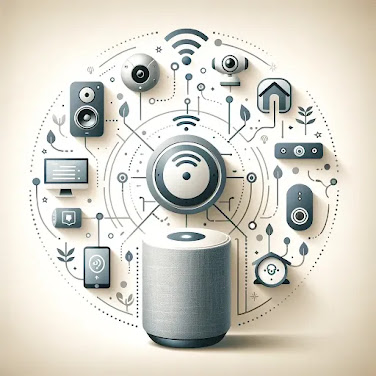Definition of Network Technology
Network technology is a family of technologies used to send and receive data across a computer network.
It enables data transmission between two or more computers, allowing them to communicate with each other over the Internet or other networks.
Network technology includes routers, switches, cables, wireless access points, and hubs. It also includes protocols such as Ethernet and TCP/IP that are used to set up connections between different types of devices on the network.
It can be used for many different purposes including :
- File transfer
- Media content streaming
- Email sending
- Remote access to applications and systems
- VoIP telephony
- Online gaming
- Instant messaging and communication services
Network technology is a cornerstone of modern connectivity, facilitating remote access to applications, securing data storage, and streamlining the distribution of diverse media forms. As an indispensable component of our daily lives, it underpins the operational backbone of businesses in our interconnected era.
This technology enables flawless data transmission over computer networks, guaranteeing a continuous and efficient flow of information. It fosters effective communication, which is crucial for the seamless operation of various sectors in the digital age.
Leveraging a combination of sophisticated software and robust hardware solutions, network technology orchestrates, regulates, and optimizes connections between computers and other devices. This integration ensures a cohesive and productive ecosystem, essential for achieving a high degree of connectivity and operational efficiency.
Network Technologies: A Concise Overview
Wired vs. Wireless Networks
- Wired Networks: Characterized by their stability and high-speed capabilities, wired networks are the backbone of stationary applications. Predominantly used in settings where mobility is not a requirement, such as in corporate offices or data centers, they provide a reliable infrastructure for heavy data transmission.
- Wireless Networks: Wireless networks have transformed our interaction with digital spaces, offering unparalleled flexibility and mobility. Ideal for mobile devices including laptops, smartphones, and tablets, they enable seamless global connectivity, from cafes to remote workspaces, underscoring the evolution toward a more connected world.
Networks by Transmission Method
- Point-to-Point Network: Embodiment of simplicity, point-to-point networks utilize short-range radio signals to forge a direct connection between two endpoints. This setup is known for secure, high-speed data exchanges, making it suitable for direct links, such as those between buildings nearby.
- Multi-Point Network: In contrast, multi-point networks cater to complex scenarios by allowing multiple connections over a single network. This architecture is scalable, accommodating a growing number of devices, thus serving large organizations or crowded areas effectively while ensuring data security.
Networks by Scale
- Local Area Network (LAN): LANs are confined to a small area, like an office or home, providing high bandwidth for quick data sharing and access to shared resources, facilitating a collaborative environment.
- Metropolitan Area Network (MAN): A MAN extends over a city or large campus, connecting several LANs to support high-speed data transfer for services like city-wide internet access and large-scale conferencing.
- Wide Area Network (WAN): WANs cover vast areas, often spanning countries, linking multiple LANs to ensure global Communication and data exchange across international offices.
- Personal Area Network (PAN): PANs support personal device connectivity within a close range, simplifying the interaction between personal gadgets like smartphones, headphones, and wearable technology.
- Virtual Private Network (VPN): VPNs offer secure, encrypted connections for accessing private networks over the internet, facilitating remote work and protecting privacy. NordVPN is highlighted as a user-friendly and secure choice, emphasizing its ease of setup and robust security features.
- Software-defined Network (SDN): SDNs revolutionize network management by separating the control and data planes, enabling dynamic resource management. This approach reduces manual configuration errors, enhances network responsiveness to changes, and improves cost efficiency by automating network operations.
See more information: – network.sciencefather.com
Nomination : Nominate Now
Contact us : network@sciencefather.com

.png)


No comments:
Post a Comment